#How To Optimize Your Statistics Pages To Earn Links
Explore tagged Tumblr posts
Text
How Google’s SGE (Search Generative Experience) Affects Content Strategy
In 2025, the landscape of search is undergoing a massive transformation with the introduction of Google’s Search Generative Experience (SGE). This AI-powered evolution changes how information is delivered to users and what type of content earns visibility. Unlike traditional search results, SGE uses generative AI to provide direct, conversational responses—often summarizing the best content across the web in one block.
For businesses and marketers, this shift demands a rethink of content strategies. It’s no longer just about ranking on the first page—it’s about being referenced in AI-generated summaries. This is where expert content writing services step in, helping brands adapt their content approach to remain relevant in this new search environment.
Let’s explore how SGE works and what it means for the future of content strategy.
What Is Google’s Search Generative Experience (SGE)?
Google’s SGE integrates generative AI into its search results, offering users quick, synthesized answers to complex queries. Instead of listing a series of links, Google now provides an AI-generated snapshot at the top of search results. These snapshots are based on various sources and often include direct citations.
This creates a more conversational, context-rich experience for users, but it also changes how content is discovered. Your content might not be clicked—but if it’s referenced by SGE, it still holds tremendous value.
1. Content Must Be Factually Rich and Credible
SGE favors content that is informative, well-cited, and trustworthy. Google's AI pulls data from sources it deems reliable. That means your content must:
Provide in-depth, accurate information
Link to credible sources
Include up-to-date facts and statistics
Thin or surface-level content is unlikely to be chosen for AI-generated summaries. Instead, SGE rewards depth and accuracy, aligning with Google's emphasis on E-E-A-T (Experience, Expertise, Authoritativeness, Trustworthiness).
2. Topic Clusters and Semantic Relevance Are Essential
Google’s SGE relies on a deeper understanding of language, context, and relationships between topics. To be included in SGE answers, your content must reflect semantic depth.
This is where topic clusters come in. Creating a pillar page supported by multiple sub-topic articles builds authority around a theme. The stronger your content ecosystem, the more likely SGE is to pull from your site.
Example: If you run a fitness brand, you’ll need a comprehensive guide on “Strength Training for Beginners,” supported by subtopics like “Best Strength Training Diets,” “Form Tips,” and “Weekly Workout Plans.”
3. Answer-Based Content Performs Better
SGE is designed to answer questions quickly and clearly. That means your content should be structured with question-driven headings, such as:
What is [Topic]?
How does [Process] work?
Pros and cons of [Service/Product]
Including FAQ sections at the end of blog posts, creating “How-to” guides, and writing listicles are all effective formats. The more your content mimics a Q&A format, the higher the chances it gets featured in AI summaries.
4. Optimizing for Featured Snippets Still Matters
Though SGE is more advanced than featured snippets, the underlying principles still apply. Clear formatting, concise definitions, and bullet points increase the likelihood of your content being pulled into SGE-generated responses.
Use formatting best practices:
Use <h2> and <h3> tags for subheadings
Keep definitions short and direct
Use tables, lists, and steps to organize answers
SGE still pulls from well-structured content—it just does it in a more intelligent, nuanced way.
5. Brand Voice and Human Touch Become Differentiators
As generative AI becomes more prevalent, authenticity and brand voice are what will set you apart. AI can summarize facts, but it can’t replicate a brand’s unique personality, storytelling style, or emotional tone.
That’s why writing in a conversational tone, using anecdotes, or sharing expert opinions can increase user engagement and build trust—factors that indirectly support SEO success.
6. Less Clicks, More Competition for Attention
With answers delivered directly in the search results, click-through rates may drop, especially for generic or commoditized content. To stand out, your content must:
Offer original insights that can’t be easily summarized
Serve as a primary source (e.g., surveys, case studies, interviews)
Use hooks and strong introductions to encourage further reading
It’s not just about being seen—your content must give users a reason to dive deeper.
Conclusion: Adapt Your Strategy with Expert Content Writing Services
Google’s Search Generative Experience is changing the SEO playbook. It’s no longer enough to simply aim for page-one rankings. Now, you must create content that earns trust, answers questions directly, and fits seamlessly into Google’s AI-generated summaries.
This shift can be overwhelming, especially for small teams. That’s why many brands are partnering with professional content writing services to future-proof their strategy. These services combine SEO expertise with quality writing to create content that performs in both traditional search and the AI-powered era of SGE.
In short, the brands that will thrive in this new landscape are those that adapt early—and write with both people and machines in mind.
0 notes
Link
0 notes
Text
In The Time It Takes To Rise

People say I'm too soft sometimes, that I let things slide, wait too long, or give too many second chances. But I don't see it that way.
I think my patience is one of the few things that's kept me steady in a world that's anything but. When the cafe gets busy and the orders stack up and tempers flare, I take a breath. I smile. I keep moving. There's a rhythm to waiting, like the way bread rises, or tea steeps just right. You can’t rush good things. People need time too, as well as space. And someone who won’t give up on them the moment they mess up.
I guess that’s where the kindness comes in.
I don’t really go around calling myself kind, but I notice things. I notice when someone in sad or happy. When they stir there coffee for too long, lost in thought. When they say “I’m fine” but won’t meet your eyes. I’m not great with big, loud gestures- but I’ll remember your order even if you haven’t been in for a few days. I’ll slip an extra cookie into your bag if it looks like you had a rough day.
that’s what I like about myself. That I try to make room for people, even when they’re hard to understand. That I wait. That I care, quietly.
Source: In The Time It Takes To Rise
0 notes
Text
What is On-Page SEO?
On-page SEO refers to all optimization practices you can implement directly on your website to improve its search rankings. These elements help search engines understand your content while enhancing user experience.
Key components include:
Content optimization
HTML tags and meta elements
URL structure
Internal linking
Image optimization
Page speed and UX

The 8 Essential On-Page SEO Factors
1. Strategic Keyword Optimization
Best practices:
Place primary keywords in:
Title tag (most important placement)
H1 heading
First 100 words of content
At least 2-3 subheadings (H2/H3)
Meta description
Use secondary keywords naturally throughout content
Maintain 1-2% keyword density (avoid stuffing)
Pro Tip: Use tools like Ahrefs or SEMrush to identify optimal keyword placement opportunities.
2. Content That Answers User Intent
Google's Helpful Content Update prioritizes content that:
Thoroughly covers topics
Provides unique insights
Solves problems better than competitors
Uses natural language (avoid robotic, SEO-stuffed content)
Content length guidelines:
Commercial pages: 1,000-1,500 words
Blog posts: 1,500-3,000 words
Pillar pages: 3,000+ words
3. Title Tags That Drive Clicks
Formula for perfect title tags: [Primary Keyword] + [Secondary Keyword] + [Brand Name] (if space allows)
Characteristics of high-performing titles:
50-60 characters max
Place keywords toward the front
Include power words (Ultimate, Best, Guide)
Create urgency when appropriate
4. Meta Descriptions That Improve CTR
While not a direct ranking factor, compelling meta descriptions:
Increase click-through rates by 5-15%
Should be 120-160 characters
Include primary keyword naturally
Contain a clear CTA ("Learn more," "Discover how")
5. URL Structure Optimization
Ideal URL format: https://example.com/primary-keyword/
URL best practices:
Keep under 60 characters
Use hyphens to separate words
Include target keyword
Avoid dates/numbers unless necessary
Remove stop words (and, the, of)
6. Header Tags That Improve Readability
Proper header hierarchy:
H1: Main title (one per page)
H2: Main sections (2-5 per page)
H3: Subsections (as needed)
H4-H6: Rarely needed for SEO
Optimization tips:
Include keywords in H2s when natural
Make headers scannable
Use question headers for voice search
7. Image Optimization for Visual Search
Essential image SEO elements:
Descriptive file names (red-running-shoes.jpg)
Alt text with keywords (but don't stuff)
Proper compression (under 100KB when possible)
Responsive sizing
Lazy loading implementation
8. Internal Linking Strategy
Benefits:
Distributes page authority
Improves crawlability
Increases time on site
Boosts conversions
Best practices:
Use 3-5 internal links per 1,000 words
Link to cornerstone content
Use descriptive anchor text
Fix broken links regularly
Advanced On-Page SEO Techniques
1. Semantic SEO and LSI Keywords
Google now understands context beyond exact-match keywords. Incorporate:
Related terms
Synonyms
Questions people ask
Topic clusters
2. Structured Data Markup
Implement schema markup to:
Earn rich snippets
Improve CTR
Help search engines understand content
3. Content Freshness Updates
Refresh content every 6-12 months by:
Adding new statistics
Updating examples
Expanding sections
Improving readability
4. Mobile-First Optimization
With mobile-first indexing:
Ensure responsive design
Test mobile speed
Check touch elements
Verify proper viewport settings
Common On-Page SEO Mistakes to Avoid
Keyword stuffing - Sounds unnatural and triggers penalties
Duplicate content - Hurts rankings across all affected pages
Thin content - Pages under 300 words rarely rank well
Slow page speed - Leads to high bounce rates
Poor internal linking - Wastes link equity and confuses users
Ignoring E-A-T - Lacks author credentials and expertise indicators
On-Page SEO Checklist
Use this quick-reference checklist to audit your pages:
✅ Keyword-optimized title tag ✅ Proper H1 with keyword ✅ 2-5 H2 subheadings ✅ Keyword in first paragraph ✅ Optimized URL structure ✅ Compelling meta description ✅ Internal links (3-5 per page) ✅ Image alt text and compression ✅ Mobile responsiveness ✅ Fast load speed (<2 seconds) ✅ Schema markup (where applicable) ✅ Content length matches intent
Conclusion: On-Page SEO as Your Competitive Advantage
In an era where Google's algorithms evaluate hundreds of ranking factors, on-page SEO remains one of the most controllable and impactful elements of your strategy. By systematically optimizing each page according to these guidelines, you can:
Improve search visibility
Increase organic traffic
Boost engagement metrics
Drive more conversions
Remember that on-page SEO isn't a one-time task. As algorithms evolve and competitors improve, continuous optimization is key to maintaining and improving your rankings.
Ready to take your on-page SEO to the next level? Start with Coding nectar. Small optimizations across multiple pages often yield better results than massive overhauls of single pages.
0 notes
Text
How to Get More Organic Traffic to Your Website — Proven Strategies for 2025
In the ever-evolving digital landscape, businesses constantly seek ways to enhance their online presence and attract more visitors. How to Get More Organic Traffic to Your Website? The answer lies in strategic SEO practices, high-quality content, and user-focused optimization techniques.
At Digital Rhetoric, we understand the importance of organic traffic and its impact on sustainable business growth. In this blog, we will explore how to increase website traffic organically using proven techniques that align with E-E-A-T (Experience, Expertise, Authority, and Trustworthiness) guidelines.
1. Understand and Align with User Intent
The foundation of how to increase organic traffic on a website lies in understanding what users are searching for. Conduct in-depth keyword research to identify queries that match user intent.
Use tools like Google Keyword Planner, Ahrefs, and SEMrush to find high-value, low-competition keywords.
Create content that directly addresses the needs of your target audience.
Optimize for long-tail keywords and questions people commonly ask.

2. Implement Semantic SEO for Better Search Visibility
Search engines now prioritize content that provides contextual depth rather than just focusing on individual keywords. How to get more organic traffic to your website? Implement Semantic SEO by:
Creating topic clusters and interlinking relevant pages.
Using related keywords, synonyms, and LSI (Latent Semantic Indexing) terms.
Writing in-depth articles that answer multiple related queries.
This strategy helps Google understand your content better and enhances its authority.
3. Optimize for Voice and Conversational Search
With the rise of smart assistants like Siri and Alexa, more users rely on voice search. To capitalize on this trend:
Use natural language and conversational phrases in your content.
Structure content using FAQ sections to target voice queries.
Ensure mobile-friendliness and fast-loading pages, as voice search is often performed on mobile devices.
By optimizing for voice search, you can increase website traffic organically and improve your ranking for spoken queries.
4. Enhance User Experience (UX) for Higher Engagement
User experience is a crucial factor in search rankings. A well-structured, user-friendly website encourages visitors to stay longer, reducing bounce rates. Follow these UX best practices:
Improve site navigation and internal linking for easy accessibility.
Use clear headings, bullet points, and short paragraphs to enhance readability.
Optimize images and multimedia to ensure fast page loading.
Google rewards websites that provide a seamless browsing experience, leading to better organic rankings.
5. Utilize Structured Data (Schema Markup) for Rich Results
Structured data helps search engines understand your content better, leading to enhanced search result features such as rich snippets.
Add schema markup to highlight important details like reviews, FAQs, and author information.
Implement breadcrumb navigation for better indexing.
Use structured data testing tools to ensure proper implementation.

6. Regularly Update and Refresh Old Content
Google values fresh and relevant content. Instead of constantly creating new articles, optimize existing ones:
Update outdated information with the latest data.
Add new sections, statistics, and relevant keywords.
Improve formatting and readability for better engagement.
Refreshing old content helps maintain authority and increase organic traffic on the website over time.
7. Leverage High-Quality Multimedia for Engagement
Content isn’t limited to text — using images, infographics, and videos can boost engagement.
Create visually appealing graphics that summarize key points.
Use engaging videos to explain complex topics.
Optimize media files for fast loading speeds.
Well-optimized multimedia content increases dwell time, signaling search engines to rank your page higher.
8. Earn High-Quality Backlinks from Authoritative Sources
Backlinks remain one of the strongest ranking factors in SEO. To earn quality backlinks:
Publish original research, case studies, and data-driven content.
Guest post on reputable industry blogs.
Build relationships with influencers and niche leaders.
Strong backlinks improve domain authority and increase website traffic organically through referral visits.
9. Strengthen Your E-E-A-T Signals
Google prioritizes content that demonstrates Experience, Expertise, Authority, and Trustworthiness (E-E-A-T). Here’s how to strengthen it:
Include author bios showcasing credentials and expertise.
Cite authoritative sources to back up claims.
Display customer testimonials and case studies to establish credibility.
By focusing on E-E-A-T, your website builds trust with both users and search engines, leading to long-term organic growth.
10. Leverage Social Media for Content Distribution
While social signals don’t directly impact SEO, they drive visibility and engagement.
Share content on LinkedIn, Twitter, Facebook, and other relevant platforms.
Engage with your audience through comments, discussions, and social shares.
Repurpose blog content into smaller social media posts.
By increasing brand awareness through social media, you can increase organic traffic on your website through referral visits and link-building opportunities.
Final Thoughts
Achieving sustainable organic traffic requires a strategic combination of SEO best practices, high-quality content, and user experience optimization. At Digital Rhetoric, we specialize in helping businesses grow online through data-driven SEO strategies and cutting-edge digital marketing solutions.
If you’re looking for expert guidance on how to get more organic traffic to your website, contact Digital Rhetoric today. Let’s create a customized SEO strategy that drives long-term success for your business!
#How to Get More Organic Traffic to Your Website#how to increase website traffic organically#how to increase organic traffic on website
0 notes
Text
How to Use Google Analytics to Track Your AdSense Earnings and Traffic
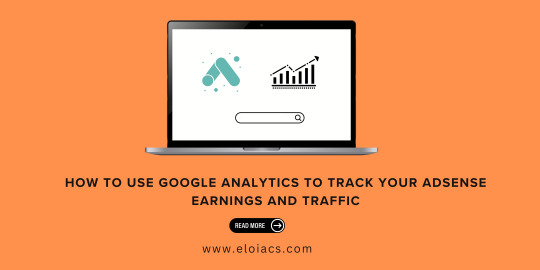
Google Analytics serves as an advanced instrument which enables website owners to track visitor interactions with their platforms. Your website earnings from Google AdSense gain easy tracking through Google Analytics which shows how visitor traffic affects your revenue stream. This article explains the process of using Google Analytics to monitor website visitor data and AdSense revenue generation in an easy-to-understand manner.
Step 1: Set Up Google Analytics on Your Website
You must establish Google Analytics on your website before beginning any tracking operations. The following steps will guide you if you have not established Google Analytics tracking on your website.
Go to the Google Analytics website.
Users should establish a Google Analytics account or log into an existing account.
Your website should become a "Property" within Google Analytics.
You must acquire the tracking code which Google provides to you.
Insert this code block into your website header section (WordPress users can employ plugins for this task).
After setting up Google Analytics the system begins gathering information about website visitors who include their duration on the site and their origins.

Step 2: Link Google Analytics with Your AdSense Account
The process of tracking AdSense earnings in Google Analytics requires a connection between your AdSense account and Google Analytics. Here’s how to do it:
Access your Google Analytics account through sign-in.
In the left-hand menu, click Admin.
To access AdSense Linking select the Property option from the list.
You need to follow the instruction to establish a connection between your AdSense account and Google Analytics. The connection between your AdSense account and Google Analytics will enable your AdSense data to appear within Analytics reports.
Step 3: Access AdSense Reports in Google Analytics
Your AdSense account becomes accessible through Google Analytics after successful linking. Users can locate those reports through the following steps:
In Google Analytics, go to the Acquisition section (in the left-hand menu).
The AdSense platform delivers multiple reports which offer important data points.
Overview: This section provides overall insights about your financial revenue and advertising display statistics together with Click-Through Rate performance.
Pages: The tool displays which web pages generate the highest AdSense revenue for your website.
AdSense - Landing Pages: The tool reveals which landing pages generate the maximum revenue for your business.
The reports show you which ads perform best alongside the pages that bring in the most revenue. Impressions and clicks together with earnings enable an assessment of your site's profitable areas.
Step 4: Track Traffic Sources
The reports show you which ads perform best alongside the pages that bring in the most revenue. Impressions and clicks together with earnings enable an assessment of your site's profitable areas.
To track traffic sources:
Go to the Acquisition section in Google Analytics.
Under All Traffic, click Channels.
The page displays which traffic sources deliver the highest number of visitors to your site. The analysis allows you to maximize your marketing strategy by attracting better traffic that demonstrates higher ad-clicking behavior.
Step 5: Optimize Your Site for Better Earnings
You should implement improvements after completing your analysis of AdSense revenue and traffic statistics from Google Analytics. To improve your site you should use these recommendations:
Focus on high-traffic pages: Create additional content about profitable topics or enhance pages that generate the most AdSense revenue.
Improve user experience: A high bounce rate together with visitors exiting the site prematurely indicates that you should focus on enhancing your content along with design and speed performance.
Test ad placement: Try different positions of your ads or ad types to determine which placement results in enhanced click rates and larger profits.

Step 6: Use Google Analytics Reports for Long-Term Growth
The information from Google Analytics serves as the foundation for making strategic decisions that will drive long-term business expansion. Performing frequent checks on AdSense performance reports alongside traffic sources enables you to improve your strategy which leads to extended website revenue growth.
Conclusion
Google Analytics is an essential tool for tracking AdSense earnings and understanding how traffic affects your revenue. By linking your AdSense account to Analytics, you can dive deep into the performance of your ads, optimize your website, and make data-driven decisions that improve both your traffic and earnings.
Regularly checking your performance data along with making adjustments through gathered analytics will lead to effective website monetization success. Embrace Google Analytics right now to monitor AdSense revenue growth. Visit Eloiacs to find more about Digital Marketing Services.
0 notes
Text
Local SEO for Orthodontists
In today’s digital age, having an online presence is no longer optional for orthodontists. Patients seeking orthodontic care often turn to search engines like Google to find a nearby provider. This makes local SEO (Search Engine Optimization) essential for orthodontists looking to grow their practice and attract more patients. At Ortho Marketing, we specialize in helping orthodontic practices maximize their online visibility. Here's everything you need to know about leveraging local SEO for your orthodontic business.
What is Local SEO and Why is it Important for Orthodontists?
Local SEO is the process of optimizing your online presence to attract more business from relevant local searches. When someone searches for “ordthodontist near me” or “braces in [city name],” search engines display results tailored to the searcher’s location. For orthodontists, local SEO ensures that your practice appears in these results, increasing the likelihood of new patient inquiries.
Statistics show that 46% of all Google searches have local intent. This means potential patients in your area are actively searching for orthodontic services. Without a strong local SEO strategy, your practice may not appear in front of these searchers, leading to missed opportunities.
Key Elements of Local SEO for Orthodontists
To dominate local search results, you need to focus on several key components of local SEO. Below are actionable steps to improve your practice’s visibility online:
1. Optimize Your Google Business Profile
Google Business Profile (GBP) is a free tool that allows you to manage how your business appears on Google Search and Maps. For orthodontists, this is a cornerstone of local SEO.
Claim and Verify Your Listing: Make sure your Google Business Profile is claimed, verified, and accurate.
Fill Out All Details: Include your practice’s name, address, phone number (NAP), website, hours of operation, and services offered.
Use Keywords: Include relevant keywords like “ordthodontist,” “braces,” and “invisalign” in your business description.
Add Photos: Upload high-quality images of your office, team, and services to make your profile more engaging.
Encourage Reviews: Positive reviews not only boost your reputation but also improve your local ranking.
2. Build a Mobile-Friendly Website
Most local searches are performed on mobile devices. A mobile-friendly, responsive website is critical for providing a great user experience and ranking well in search results.
Optimize for Speed: Ensure your website loads quickly, as slow-loading pages can lead to higher bounce rates.
Use Location Keywords: Incorporate location-specific keywords like “orthodontist in [city name]” throughout your site, especially on key pages such as your homepage, service pages, and contact page.
Add Schema Markup: Use structured data to help search engines understand your website and display rich results, such as reviews and contact information.
3. Leverage Local Citations
Local citations are mentions of your business name, address, and phone number (NAP) on other websites, such as directories and social media platforms. Consistent citations improve your local SEO.
Submit to Directories: Ensure your practice is listed on popular directories like Yelp, Healthgrades, and Zocdoc.
Ensure Consistency: Double-check that your NAP information is consistent across all platforms.
Add Local Links: Partner with local businesses or organizations to earn backlinks to your website, boosting your authority.
4. Create Localized Content
Content marketing is a powerful way to connect with your local audience and establish yourself as an authority in orthodontics.
Write Blog Posts: Share articles addressing common questions, such as “What is the Best Age for Braces?” or “How to Choose the Right Orthodontist in [city name].”
Highlight Local Events: If your practice participates in community events or sponsors local initiatives, feature these on your blog or social media.
Use Geo-Targeted Keywords: Include city and neighborhood names in your content to increase visibility for local searches.
5. Focus on Online Reviews
Online reviews play a significant role in local SEO rankings. They also help build trust with potential patients.
Ask for Reviews: After successful treatments, encourage patients to leave a review on your Google Business Profile or other review platforms.
Respond to Reviews: Thank patients for positive feedback and address any concerns in negative reviews professionally.
Use Feedback: Analyze reviews to identify areas of improvement in your practice.
6. Monitor and Improve Your Rankings
SEO is an ongoing process, and monitoring your results is crucial to success.
Use Tools: Platforms like Google Analytics, Google Search Console, and local SEO tools such as BrightLocal or Moz Local can help track your performance.
Track Keywords: Monitor your rankings for local keywords and adjust your strategy as needed.
Analyze Competitors: Study what other local orthodontists are doing and identify opportunities to stand out.
Benefits of Local SEO for Orthodontists
Investing in local SEO can transform your practice by:
Attracting New Patients: Increased visibility means more inquiries from potential patients in your area.
Building Credibility: A strong online presence backed by positive reviews establishes trust.
Improving ROI: Local SEO is a cost-effective marketing strategy compared to traditional advertising methods.
Enhancing Patient Experience: An optimized online presence makes it easier for patients to find information and contact your practice.
Partner with Ortho Marketing for Local SEO Success
Implementing an effective local SEO strategy can be time-consuming, but it’s worth the effort. If you’re ready to take your orthodontic practice to the next level, Ortho Marketing can help. We specialize in crafting customized local SEO strategies that drive results for orthodontists.
Contact us today to learn how we can boost your practice’s online visibility and attract more patients in your community.
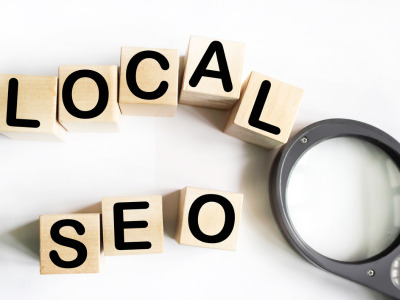
0 notes
Text
SEO Tips for Landing Pages: Boost Your Rankings Today
Creating a high-ranking landing page is both an art and a science. With the right SEO strategies, you can ensure that your landing page not only attracts visitors but also converts them into loyal customers. Here are actionable SEO tips for landing pages that will help boost your rankings today.
1. Optimize Your Headlines and Meta Tags
Your headline is the first thing users and search engines notice. Craft a compelling headline that includes your target keyword, "SEO Tips for Landing Pages." Similarly, ensure your meta title and description are optimized to entice clicks while incorporating relevant keywords. This optimization helps search engines understand your content's relevance and encourages users to click through to your page.
2. Use a Clear and Relevant URL Structure
A clean, concise URL improves user experience and search engine visibility. Use your primary keyword in the URL—for example, www.example.com/seo-tips-for-landing-pages.
3. Conduct Thorough Keyword Research
Identify high-traffic, low-competition keywords related to your niche. Focus on primary keywords like "SEO Tips for Landing Pages" and long-tail variations such as "best SEO practices for landing pages" or "how to optimize landing pages for SEO."
4. Create High-Quality, Relevant Content
The content on your landing page must be informative, engaging, and directly aligned with user intent. Focus on addressing the pain points of your target audience and offering actionable solutions. Incorporate your keywords naturally to maintain readability and avoid keyword stuffing.
5. Ensure Mobile-Friendliness
With a majority of internet traffic coming from mobile devices, it’s crucial to have a mobile-responsive landing page. Google prioritizes mobile-first indexing, so test your page's design, speed, and functionality on various devices.
6. Improve Page Load Speed
A slow-loading landing page can drive users away and hurt your rankings. Use tools like Google PageSpeed Insights to evaluate your page’s speed and address issues like image optimization, server response time, and unnecessary scripts.
7. Leverage Visual Content
High-quality visuals, including images, videos, and infographics, make your landing page more engaging and shareable. Optimize images by compressing them and adding descriptive alt text that includes keywords like "SEO Tips for Landing Pages."
8. Use Clear Call-to-Actions (CTAs)
A strong CTA encourages users to take the desired action. Ensure your CTA is clear, prominent, and aligned with the content—for example, "Download Our Free Guide to SEO Tips for Landing Pages."
9. Incorporate Internal Linking
Link to relevant pages on your website to guide users and distribute link equity. For instance, link to blog posts about "SEO strategies" or "landing page optimization" to provide additional value and improve SEO.
10. Earn High-Quality Backlinks
Backlinks from authoritative websites boost your landing page's credibility and rankings. Create shareable content and collaborate with industry influencers to earn backlinks. Tools like Ahrefs can help you analyze backlink opportunities.
11. Focus on User Experience (UX)
A seamless UX ensures visitors stay on your page longer, reducing bounce rates and improving rankings. Use clear navigation, legible fonts, and a logical page layout.
12. Optimize for Voice Search
With the rise of voice-activated devices, optimize your landing page for conversational queries. Include natural language keywords and questions like, "What are the best SEO tips for landing pages?"
13. Use Structured Data Markup
Implement schema markup to help search engines understand your page’s content better. Structured data can enhance your page’s search results with rich snippets, improving click-through rates.
14. Regularly Update Your Content
Keep your landing page content fresh and relevant. Update statistics, refine your messaging, and add new insights to maintain its value for users and search engines.
15. Track and Analyze Performance
Use tools like Google Analytics and Search Console to monitor your landing page’s performance. Track metrics such as traffic, bounce rate, and conversion rate to identify areas for improvement.
16. Target Local SEO
If your business serves a specific geographic area, optimize your landing page for local searches. Include location-based keywords and add your business to Google My Business.
17. Use Testimonials and Social Proof
Showcasing testimonials, reviews, or trust badges can build credibility and encourage conversions. Highlight positive feedback to reassure visitors of your expertise.
18. Optimize for Featured Snippets
Aim to rank for featured snippets by providing concise, structured answers to common queries. Use bullet points, numbered lists, or direct explanations to capture this valuable SERP real estate.
19. Integrate Social Sharing Buttons
Make it easy for users to share your landing page on social media platforms. Social signals can indirectly influence your rankings by driving more traffic and increasing visibility.
20. A/B Test Your Page Elements
Experiment with different headlines, CTAs, layouts, and visuals to determine what resonates most with your audience. Use tools like Optimizely to conduct A/B tests and refine your landing page.
21. Implement Secure HTTPS Protocol
An HTTPS-secured website ensures user data safety and boosts trust. Search engines also favor secure sites, making it a critical ranking factor.
22. Avoid Duplicate Content
Ensure your landing page content is unique and not replicated from other pages on your site or external sources. Duplicate content can confuse search engines and lower rankings.
23. Focus on Intent-Based Optimization
Understand the intent behind your target audience’s queries—whether informational, navigational, or transactional—and tailor your content accordingly.
24. Utilize Heatmaps and User Behavior Tools
Use tools like Hotjar to analyze how users interact with your landing page. Identify areas that need improvement and optimize based on user behavior insights.
25. Monitor Competitors’ Strategies
Analyze top-ranking competitors for your target keyword, "SEO Tips for Landing Pages." Identify gaps in their strategy and leverage opportunities to outperform them.
Conclusion
Optimizing your landing pages for SEO requires a balanced approach that combines technical know-how with user-centric design. By following these tips, you can enhance your page’s visibility, attract more traffic, and achieve better conversions. Start implementing these strategies today and watch your rankings soar!
0 notes
Text
How to Build Trust and Authority with Your Quora Account
Quora is a powerful platform for establishing yourself as an expert and building trust with your audience. A well-managed account can boost your credibility and create valuable connections. Here’s how to achieve that:
1. Optimize Your Profile
Start with a professional profile picture and a bio that highlights your expertise. Include links to your website, portfolio, or social channels to give readers more ways to learn about you. A strong first impression builds instant credibility.
Check This Page: Buy Quora Account
2. Answer with Value
Focus on providing detailed, thoughtful answers that solve problems or educate your audience. Use examples, statistics, and relevant sources to support your points. The more value you provide, the more trust you’ll earn.
3. Stay Consistent
Consistency is key to building authority. Regularly answer questions in your niche to maintain visibility and reinforce your expertise.
4. Engage Authentically
Respond to comments and engage with readers who interact with your answers. Building genuine connections helps you stand out as a trusted voice.
5. Focus on Your Niche
Stick to topics you know well. Specializing in a specific area makes your answers more authoritative and attracts a relevant, engaged audience.
6. Build Social Proof
Encourage readers to upvote and share your answers by delivering high-quality content. Over time, this social proof enhances your profile’s trustworthiness.
By following these strategies, you can transform your Quora account into a platform for trust and authority.
Related Post: Buy USA Quora Accounts
0 notes
Text
Demystifying Spotify for Independent Artists
The music industry has undergone a massive transformation in the past decade, and Spotify has emerged as one of the most influential platforms for artists. For independent musicians, Spotify offers unparalleled opportunities to reach global audiences and establish a thriving career. However, navigating the platform effectively requires a thorough understanding of its features and tools. This guide will help demystify Spotify, empowering independent artists to leverage its potential and grow their music careers.
Maximizing Royalties from Spotify Streams
Spotify’s royalty system can seem opaque to many artists, but understanding it is essential to optimizing your revenue. When you receive royalties from Spotify, the payout is based on factors such as total streams, your percentage of the platform’s streams, and agreements with your digital distributor.
While Spotify operates on a pro-rata system, independent artists can maximize earnings by focusing on increasing their listener base. Start by engaging directly with fans through your Spotify profile. Personalized playlists, release calendars, and even virtual live sessions can help keep your audience engaged. Collaborative playlists, where you feature other artists in your genre, can also drive cross-promotion and attract new listeners.
Electronic Press Kits: The Secret Weapon for Artists
As an independent artist, standing out in a crowded marketplace is no easy feat. This is where an electronic press kit sample can come in handy. Think of an EPK as your professional music resume. It showcases your best work, highlights your achievements, and presents your brand in the best light to potential collaborators, venues, and media outlets.
A typical EPK includes essential elements like:
A compelling biography that tells your story.
High-quality press photos suitable for promotional purposes.
Links to your top tracks or most successful albums.
A list of past performances, awards, or collaborations.
Spotify statistics, such as monthly listeners or popular playlists featuring your songs, can also be included in the EPK. These metrics demonstrate your growing popularity and are especially compelling for booking agents or playlist curators.
Uploading Music on Spotify Without Hassle
Getting your music onto Spotify is one of the most critical steps for any independent artist. To put music on Spotify, you’ll need to use a digital distributor such as DistroKid, TuneCore, or CD Baby. These services act as intermediaries, uploading your music to Spotify and other streaming platforms while ensuring compliance with metadata and copyright standards.
Before uploading, make sure your tracks are mastered professionally and meet Spotify’s technical requirements. The metadata (track title, artist name, and album details) must also be accurate to ensure your music is discoverable. Additionally, optimize your artist profile by adding a high-resolution image, bio, and links to your social media pages. A polished profile increases your chances of being noticed by playlist curators and fans alike.
To boost visibility, consider pitching your tracks for Spotify's curated playlists. The Spotify for Artists dashboard lets you pitch unreleased music directly to playlist editors. This feature is invaluable for independent artists aiming for placements on popular playlists that can dramatically increase streams.
Mastering the Pitching Process in Music
One of the most effective ways to grow your presence on Spotify is by pitching your music to curators. But what is pitching in music, and how can you excel at it?
Pitching is essentially presenting your music to decision-makers like playlist curators, radio hosts, or licensing professionals. The goal is to convince them that your song deserves a spot in their rotation. A well-crafted pitch highlights the unique qualities of your track and explains why it resonates with your target audience.
To start, identify the playlists most relevant to your genre. Avoid mass emails; instead, personalize your pitch by referencing the playlist’s style and explaining why your music fits in. Include a brief, engaging description of your song, links to your Spotify profile, and your latest EPK.
Timing is critical for a successful pitch. Reach out to curators well before your release date to give them time to review your track. Use Spotify for Artists to track your submission status and measure the impact of playlist placements on your streaming numbers.
Breaking Down Spotify Royalty Reports for Better Insight
As your music gains traction on Spotify, understanding your earnings becomes vital. A royalty report spotify provides detailed insights into your revenue streams, helping you track your growth and identify opportunities for improvement.
Royalty reports include data on:
Total streams and geographic distribution of listeners.
Payouts from different countries or regions.
Revenue earned through premium versus free-tier listeners.
By analyzing these reports, you can tailor your marketing strategies to focus on regions where your music performs well. For example, if your streams are surging in a specific city, consider targeting that area with social media ads or planning a live performance.
It’s also worth noting that royalty reports can uncover areas where additional effort is needed. If streams are low despite significant marketing efforts, you may need to revisit your promotional strategy or collaborate with artists who can introduce your music to new audiences.
Final Tips for Independent Artists on Spotify
Spotify offers an array of tools to help independent musicians succeed, but consistent effort and strategic planning are crucial. Here are a few final tips:
Leverage Spotify Canvas: Create short, visually engaging videos that play in the background of your tracks.
Utilize Spotify Ads: Run audio or video ads to promote your latest releases to a wider audience.
Monitor Listener Trends: Use Spotify for Artists analytics to track your performance and adapt your strategies accordingly.
Engage with Fans: Respond to comments, share behind-the-scenes content, and keep your listeners invested in your journey.
By combining these strategies with a clear understanding of royalties, pitching, and the tools at your disposal, you can make the most of what Spotify offers.
Conclusion
Spotify has become a game-changer for independent artists, offering the tools and reach needed to thrive in today’s music industry. By mastering the platform’s intricacies—whether it’s understanding royalties, crafting a professional EPK, or pitching your tracks—you can elevate your music career to new heights.
Are you ready to take the next step? Start by implementing the strategies discussed above and watch your Spotify presence soar. Share your experiences or challenges in the comments below!
0 notes
Text
From Zero to Hero: Warangal SEO Expert’s Tips for Ranking Fast | 6milesinfo
In today’s digital world, visibility is everything. Whether you’re a budding entrepreneur, a wedding photographer in Warangal, or a student launching a side hustle, ranking high on search engines can be the difference between obscurity and success. Search Engine Optimization (SEO) is no longer optional—it’s essential. And if you’re looking to dominate the search engine results, learning from a Warangal SEO expert can take your business from zero to hero in no time.
This comprehensive guide will equip you with actionable tips, the latest SEO trends, and insights from Warangal’s top SEO in Warangal to help you rank fast and effectively. Let’s dive into the ultimate blueprint for SEO success.
Why SEO Matters in Warangal’s Growing Business Landscape
Warangal, a vibrant city known for its rich cultural heritage, is also evolving into a thriving business hub. With the rise of e-commerce, tech startups, and service-based businesses like wedding photography, SEO is crucial for standing out in the crowded digital space. Recent statistics reveal that India’s internet users are expected to reach 900 million by 2025, making SEO a powerful tool to capture local and national markets.
The Competitive Edge of SEO in Warangal
Hyper-Local Targeting: SEO allows businesses to connect with customers searching for services in Warangal. Optimizing for “SEO in Warangal” or “wedding photographers in Warangal” ensures local visibility.
Cost-Effective Growth: Compared to traditional advertising, SEO delivers long-term benefits at a fraction of the cost.
Brand Authority: Ranking on the first page builds trust and credibility, essential for businesses looking to grow their customer base.
Expert Tips for Ranking Fast: From Zero to Hero
1. Master the Basics of On-Page SEO
On-page SEO involves optimizing individual web pages to rank higher and earn more relevant traffic. Here’s how to get it right:
Keyword Research: Use tools like Google Keyword Planner to identify high-traffic keywords such as “SEO in Warangal” and “wedding photography tips.”
Meta Titles and Descriptions: Ensure each page has a unique, keyword-rich title and meta description.
Header Tags (H1, H2, H3): Structure your content using headers that include target keywords for better readability and SEO value.
Internal Linking: Link to other relevant pages on your site to enhance user experience and improve crawling by search engines.
Pro Tip: Use long-tail keywords like “affordable wedding photography in Warangal” to capture niche search traffic.
2. Optimize for Mobile and Core Web Vitals
With over 70% of internet traffic coming from mobile devices, ensuring your website is mobile-friendly is non-negotiable. Google’s Core Web Vitals focus on:
Loading Speed: Ensure your website loads in under 3 seconds.
Interactivity: Make your website responsive with easy navigation.
Visual Stability: Ensure no layout shifts occur during loading.
Case Study: A local wedding photographer in Warangal saw a 50% increase in inquiries after optimizing their website for mobile users.
3. Leverage Local SEO and Google My Business (GMB)
Local SEO is key for businesses wanting to attract nearby customers.
Claim and Optimize Your GMB Listing: Include accurate business information, high-quality images, and customer reviews.
Encourage Reviews: Positive reviews build trust and improve local rankings.
Local Keywords: Use terms like “best SEO expert in Warangal” or “top wedding photographer in Warangal” throughout your content.
4. Create High-Quality, Engaging Content
Content remains king. Focus on creating valuable, shareable content that resonates with your audience.
Blog Posts: Write blogs on trending topics like “Top Wedding Photography Trends in India” or “SEO Tips for Small Businesses in Warangal.”
Videos: Create short, engaging videos showcasing your expertise.
Infographics: Share visually appealing data or tips that are easy to consume.
Expert Insight: According to Anil Reddy, a leading SEO specialist in Warangal, “Content that solves real problems and provides actionable insights is the fastest way to build authority and drive traffic.”
5. Harness the Power of Social Media for SEO
Social signals like shares, likes, and comments can indirectly influence SEO rankings.
Share Your Content: Post blogs, videos, and case studies on platforms like Facebook, Instagram, and LinkedIn.
Engage with Your Audience: Respond to comments, participate in discussions, and build a community around your brand.
Collaborate with Influencers: Partner with local influencers in Warangal to amplify your reach.
6. Utilize Voice Search Optimization
Voice search is on the rise, with users increasingly relying on smart assistants.
Focus on Conversational Keywords: Optimize for phrases like “best SEO services near me” or “wedding photographers in Warangal.”
Create FAQ Pages: Answer common questions your audience might ask using natural language.
7. Monitor, Analyze, and Adjust Your SEO Strategy
SEO is an ongoing process. Use tools like Google Analytics and Google Search Console to track performance.
Monitor Traffic Sources: Understand where your visitors are coming from and which keywords drive the most traffic.
Adjust Your Strategy: Continuously optimize your content based on data insights for better results.
Exclusive Offers: SEO Services in Warangal
To help businesses grow, the leading SEO guru in Warangal offers exclusive SEO packages:
Starter SEO Package: Perfect for startups and small businesses. Includes keyword optimization and local SEO – starting at ₹10,000/month.
Advanced SEO Package: Comprehensive SEO strategy, content marketing, and analytics – starting at ₹25,000/month.
Special Discount: Sign up before [insert date] and get a 15% discount on your first three months!
FAQs
Q1: How long does it take to rank on Google using SEO in Warangal? A: SEO is a long-term strategy, but with expert guidance, you can start seeing results in as little as 3-6 months.
Q2: Can SEO help my wedding photography business in Warangal? A: Absolutely! SEO can increase your visibility, attract more clients, and boost your revenue by targeting relevant keywords and optimizing your content.
Q3: What makes local SEO important in Warangal? A: Local SEO ensures your business appears in local search results, making it easier for potential customers in Warangal to find you.
Q4: Is SEO expensive? A: SEO is an investment with long-term benefits. Compared to traditional advertising, it offers a higher return on investment over time.
Conclusion
From zero to hero, mastering SEO in Warangal can transform your business. Whether you’re a business owner, wedding photographer, or entrepreneur, implementing these expert tips can help you rank fast, attract more clients, and achieve sustainable growth. Don’t miss out—start your SEO journey today and watch your business soar!
Contact Warangal’s top SEO expert now to elevate your digital presence and take advantage of exclusive offers!
0 notes
Text
In The Time It Takes To Rise

People say I'm too soft sometimes, that I let things slide, wait too long, or give too many second chances. But I don't see it that way.
I think my patience is one of the few things that's kept me steady in a world that's anything but. When the cafe gets busy and the orders stack up and tempers flare, I take a breath. I smile. I keep moving. There's a rhythm to waiting, like the way bread rises, or tea steeps just right. You can’t rush good things. People need time too, as well as space. And someone who won’t give up on them the moment they mess up.
I guess that’s where the kindness comes in.
I don’t really go around calling myself kind, but I notice things. I notice when someone in sad or happy. When they stir there coffee for too long, lost in thought. When they say “I’m fine” but won’t meet your eyes. I’m not great with big, loud gestures- but I’ll remember your order even if you haven’t been in for a few days. I’ll slip an extra cookie into your bag if it looks like you had a rough day.
that’s what I like about myself. That I try to make room for people, even when they’re hard to understand. That I wait. That I care, quietly.
Source: In The Time It Takes To Rise
0 notes
Text
Understanding Advanced On-Page SEO Techniques
If you're a digital marketer, content creator, or SEO specialist, chances are you’ve tackled the basics of on-page SEO—think keywords, meta tags, and alt text. But once you’ve nailed the fundamentals, where do you go next? That’s where advanced on-page SEO techniques come into play.
This post explores advanced strategies to help you elevate your on-page optimization game and drive more traffic to your content. By the end, you’ll gain actionable insights into implementing nuanced SEO best practices, from optimizing content for featured snippets to mastering internal linking. Plus, we’ll touch on why companies in areas like Tucson SEO are turning to these methods to stand out in competitive markets.
How Advanced On-Page SEO Makes a Difference
On-page SEO is more than just placing keywords strategically—it shapes the user experience while signaling relevance to search engines. Advanced techniques take this further by ensuring every element on a page supports both usability and rankings.
Consider this example: Suppose two websites are optimized for the same keyword, like "on-page optimization." The site employing advanced strategies (such as structured data and content depth) would likely perform better, driving more qualified traffic.
Why Focus on Advanced Techniques?
Improved Rankings – Gain a competitive edge for highly searched keywords.
Enhanced User Engagement – Provide users with value-packed, easily digestible content.
Earn Featured Snippets – Become the go-to source directly showcased on Google SERPs.
Higher ROI – Advanced strategies attract more targeted traffic, improving conversions.
Now, let's break down actionable techniques to incorporate today.
Optimize for Featured Snippets
Featured snippets show up at the top of Google search results, often referred to as "Position Zero." Appearing here can significantly increase visibility and click-through rates.
How to Optimize for Snippets
Answer Questions Clearly: Searchers love quick answers. Structure your content into brief, scannable paragraphs or bulleted lists that directly respond to common questions (e.g., "What is advanced on-page SEO?").
Use Heading Tags Purposefully: Include core questions in your H2s or H3s and follow them with concise answers.
Example
H3: What is Advanced On-Page SEO?
“Advanced On-Page SEO involves optimizing beyond basic tactics, including structured data, semantic keywords, content hierarchy, and page speed improvements to rank better and enhance usability.”
Create Data Tables: Snippets love structured data like comparisons, timelines, or statistics. Tools like HTML table generators can help you format data more effectively.
Leverage Semantic and LSI Keywords
Rather than overloading a page with the same keyword, Google’s algorithm now focuses on semantic relevance. Contextual keywords allow you to cover a topic thoroughly while creating a natural user experience.
Actionable Tips
Brainstorm Synonyms and Variations: For "On-Page Optimization," consider "Page SEO tactics" or "Website optimization techniques."
Use Tools: Tools like LSIGraph or Google’s “People Also Ask” box can help you gather related phrases.
Contextual Placement: Naturally blend variations into subheadings, captions, meta descriptions, and body copy.
For professionals focusing on hyper-local markets, incorporating Tucson SEO directly alongside semantic keywords helps attract geo-specific clientele searching for location-based solutions.
Improve URL Structures
Your page’s URL matters for search engine understanding and user clickability. Clean, readable structures are more SEO-friendly.
Best Practices for URL Optimization
Short and Sweet: Condense URLs to retain only the essential parts of a page’s topic.
Good Example: `domain.com/advanced-on-page-seo-tips`
Bad Example: `domain.com/articles/2023/advancedseo/001xyz`
Keyword Placement: Position primary keywords earlier in the URL string for emphasis.
Utilize Structured Data (Schema Markup)
Schema markup adds context to your content. It allows search engines to categorize and display your data as rich snippets. Whether you’re sharing reviews, FAQs, or local Tucson SEO services, structured data lets your content speak Google’s language.
Quick Tips to Implement
Use JSON-LD Format: Most search engines prefer this format for their crawlers.
Leverage Testing Tools: Google’s Structured Data Testing Tool ensures your schemas are correctly placed.
Highlight FAQs and Reviews: Providing deeper insights could earn you coveted SERP real estate.
Master Internal Linking
Internal links aren’t just about navigation—they help distribute PageRank and guide users toward deeper content.
Advanced Internal Linking Strategies
Link Contextually: Create connections between related pages through anchor text that matches semantic search intent. For example, linking “Learn advanced on-page SEO techniques here” leads readers directly to valuable articles.
Use Pillar Posts: Build a strong hub-and-spoke model by linking back consistently to comprehensive pillar resources while creating supporting articles.
Internal linking packs a punch in local search strategies. For instance, businesses targeting Tucson SEO can boost rankings by linking blog posts, service pages, and location-specific landing pages.
Prioritize Page Speed and Mobile Friendliness
Since Google shifted to mobile-first indexing, a mobile-friendly site with fast load times is non-negotiable.
Key Areas to Focus On
Compress Images – Use tools like TinyPNG to optimize image sizes without loss of quality.
Content Delivery Network (CDN) – CDNs like Cloudflare improve load speeds globally by caching content closer to users.
Mobile Usability – Use Google’s Mobile-Friendly Test to see how well your site adapts to smaller screens.
Where Tucson SEO Can Benefit
For those working within a specific locale like Tucson, local SEO strategies combined with these advanced on-page techniques yield impressive results. Adding city names in meta descriptions, ALT text, and content headers ensures your site resonates with geo-targeted audiences.
Elevate Your SEO Game
Mastering advanced on-page SEO techniques can drive impactful results—improved rankings, enhanced user experience, and higher visibility in competitive markets. Whether you’re a digital marketer aiming to rank nationally or a Tucson SEO firm looking to dominate locally, powerful optimization practices can set you apart.
0 notes
Text
Leveraging Data and Analytics for Smarter SEO: Boost Rankings, Drive Traffic, and Optimize Conversions
Using data and analytics to drive your SEO decisions is crucial in today’s digital landscape. As search engines become more sophisticated, relying on guesswork or outdated strategies is no longer sufficient. Data-driven SEO allows you to make informed decisions, optimize your website effectively, and ultimately increase your online visibility and traffic. This approach ensures that your efforts are targeted, efficient, and aligned with search engine algorithms, making it easier for you to achieve higher rankings and better ROI.
Understanding the value of data in SEO is the first step to leveraging it for your business. Data, in essence, is a collection of facts and statistics gathered over time, which can be analyzed to identify patterns and trends. When applied to SEO, this data can range from keyword performance, search volume, user behavior, bounce rates, click-through rates, and much more. Using these metrics, you can tailor your SEO strategy to meet the needs of your audience, optimize your content, and ensure that your website is performing at its best.
One of the primary ways data and analytics can benefit your SEO is through keyword research. Keywords are the foundation of SEO, and using data to analyze which keywords are most relevant to your business can significantly impact your rankings. By using tools like Google Keyword Planner, Ahrefs, or SEMrush, you can find high-volume, low-competition keywords that can drive targeted traffic to your website. Moreover, these tools allow you to analyze keyword difficulty, search volume, and trends over time, helping you choose the best keywords to focus on. Data-driven keyword research can also help you identify long-tail keywords that are often overlooked but can bring in highly targeted traffic. These keywords may have lower search volumes but are typically associated with users who are further along in the buyer’s journey, making them more likely to convert.
Another critical aspect of using data for SEO is analyzing your competitors. Competitor analysis involves studying the strategies of your competitors to identify what is working for them and where there are opportunities for you to outperform them. Tools like Moz, Ahrefs, and SEMrush allow you to analyze your competitors' backlinks, keywords, and overall website performance. By understanding what keywords your competitors are ranking for, what content is driving their traffic, and where their backlinks are coming from, you can adjust your strategy to target those same keywords, create better content, and earn valuable backlinks. This data-driven approach allows you to stay ahead of your competition and continuously improve your SEO efforts.
Analytics also play a crucial role in understanding user behavior on your website. Tools like Google Analytics provide a wealth of data about how users interact with your site, including how they found you, what pages they visit, how long they stay, and where they drop off. By analyzing this data, you can identify which pages are performing well and which need improvement. For instance, if you notice a high bounce rate on a particular page, it may indicate that the content is not engaging enough or that the page is not optimized for the right keywords. By making data-driven adjustments, such as improving the content, adding internal links, or optimizing the page’s loading speed, you can enhance the user experience and increase the chances of retaining visitors.
Content is king in the world of SEO, and using data to inform your content strategy is essential. By analyzing which types of content are driving the most traffic and engagement, you can focus on creating more of that content. This could involve blog posts, videos, infographics, or other formats that resonate with your audience. Additionally, data can help you identify content gaps, where you may not be covering certain topics that are relevant to your audience. By filling these gaps, you can attract more visitors and establish your website as an authority in your industry. Moreover, analyzing your content’s performance over time allows you to update or repurpose old content to keep it fresh and relevant, which is a key factor in maintaining strong SEO rankings.
Backlinks remain one of the most important ranking factors for SEO, and using data to build a strong backlink profile is essential. Tools like Ahrefs and Moz can help you analyze your current backlink profile, identify toxic links that may be harming your SEO, and find opportunities for earning new backlinks. Data can reveal which websites are linking to your competitors, which can be potential targets for your link-building efforts. Additionally, analyzing the anchor text of your backlinks can help you optimize your link-building strategy by ensuring that your anchor text is diverse and relevant. By using data to drive your backlink strategy, you can improve your website’s authority and increase its chances of ranking higher in search engine results.
Technical SEO is another area where data and analytics can make a significant impact. Technical SEO involves optimizing your website’s infrastructure to ensure that search engines can crawl and index your site effectively. Tools like Google Search Console provide data on your site’s performance, including crawl errors, mobile usability issues, and page speed insights. By analyzing this data, you can identify technical issues that may be affecting your rankings and take steps to fix them. For example, if your website has slow loading times, you can use data to identify the causes, such as large image files or excessive JavaScript, and make the necessary optimizations. A data-driven approach to technical SEO ensures that your website is not only optimized for search engines but also provides a better user experience.
Local SEO is particularly important for businesses that rely on local customers, and data can help you optimize your website for local search results. By analyzing data from tools like Google My Business, you can understand how users are finding your business, what search terms they are using, and which of your listings are performing the best. This data can help you optimize your local SEO strategy by focusing on the most relevant keywords, improving your online reviews, and ensuring that your business information is accurate and up to date. Data can also reveal which local competitors are outranking you and why, allowing you to adjust your strategy to improve your local search visibility.
Conversion rate optimization (CRO) is another area where data and analytics are invaluable. While driving traffic to your website is important, it is equally important to convert that traffic into customers. By using data to analyze user behavior, you can identify obstacles that may be preventing users from converting. This could involve analyzing the performance of your landing pages, call-to-action buttons, or checkout process. Tools like Hotjar and Crazy Egg provide heatmaps and session recordings that allow you to see how users interact with your website, making it easier to identify areas for improvement. By making data-driven changes, such as simplifying your checkout process or improving the design of your landing pages, you can increase your conversion rates and maximize the ROI of your SEO efforts.
The impact of data on SEO goes beyond just optimizing your website. It also allows you to measure the effectiveness of your SEO campaigns and make data-driven decisions about where to allocate your resources. By setting up goals and tracking key performance indicators (KPIs) in tools like Google Analytics, you can measure the success of your SEO efforts and identify areas for improvement. This could involve tracking metrics like organic traffic, keyword rankings, backlinks, and conversion rates. By regularly reviewing this data, you can adjust your strategy as needed to ensure that you are meeting your goals and maximizing your SEO performance.
In conclusion, using data and analytics to drive your SEO decisions is essential for staying competitive in today’s digital landscape. By leveraging data for keyword research, competitor analysis, user behavior, content optimization, backlink building, technical SEO, local SEO, and conversion rate optimization, you can make informed decisions that improve your website’s performance and drive more traffic to your site. A data-driven approach ensures that your SEO efforts are targeted, efficient, and aligned with search engine algorithms, ultimately leading to higher rankings, increased visibility, and better ROI. As search engines continue to evolve, the importance of using data to inform your SEO strategy will only continue to grow, making it more important than ever to embrace a data-driven approach to SEO.
0 notes
Text
What is SEO? A Comprehensive Guide For Beginners

You own a website, but you get no sales! This must feel clenching and worrisome, right? Many websites face this same issue. The products or valuable information might be amazing, but they are hidden away in the vast internet.
Google processes over 3.5 billion searches every single day! With the majority of clicks going to the top few results. Statistics suggest that around 70% of all clicks are on organic results, while only 30% go to paid ads. This is why SEO, or Search Engine Optimization, is needed to get your website discovered.
SEO stands for Search Engine Optimization. It is the process of optimizing your website to rank higher in search engine results, making it more visible to people searching for your product or service. It helps you attract traffic, providing long-term results, and increasing online visibility.
There are 3 main divisions of SEO: On-page, Technical and off-page
On-Page SEO:
Keywords: These are the ‘search terms’ people type into Google. You want these sprinkled naturally throughout your site like masala in your dish, but not so much that it’s overwhelming to indicate that you are supposed to come in search when that term is searched.
Content: Content is king. When your blog, product descriptions, or website pages solve problems and answer questions, you’re more likely to rank higher. If your content walks them through the process like an old friend, you’ve not only helped a user but also earned Google’s favour. Answer your audience’s questions. If someone’s searching “how to fix a flat tire” and your blog walks them through it like a friend, you’ve just won a loyal reader (and Google’s favor).
Meta Tags and Titles: These play a very important role in your rankings as these are what Google reads and presents on the result page, thus they are significant in your ranking and discoverability. Use them wisely so as to improve your chances of getting more and more relevant visitors.
Also Read: People Also Search For: Meaning and Important Guide for SEO
Technical SEO
While the user may never see it, technical SEO is crucial. It ensures that Google can easily crawl and index your website, ensuring everything runs smoothly behind the scenes.
Page Speed: If you have got a slow-loading site people bounce faster than a cricket ball hitting the boundary. Google doesn’t like that, and neither do users. Thus your website, given our attention spans dropping below that of a starfish, should not exceed 3 seconds, and the good sweet spot is around 1.5–2 seconds
Mobile Optimization: Your website should offer a good mobile surfing experience since the majority of traffic on the websites come from mobile devices, thus the experience on mobile is a crucial factor for SEO
Schema Markup & Sitemaps: This is like giving Google a cheat sheet. It helps the search engine understand your content better and display it with fancy extras like star ratings, prices, or FAQs directly in search results.
Off-Page SEO:
Building Backlinks: Backlinks, or inbound links from other reputable sites, are like votes of confidence for your content. Search engines view these links as indicators of quality and authority, helping your site rank higher.
Guest Posts and Forums: Submitting articles on other websites that link to yours answering questions on forums and linking your answers to your website helps you improve the authority of your website.
Social media presence: While social media marketing presence is not a direct ranking factor, having your content shared and discussed on social platforms can increase visibility and bring more traffic to your site, which can indirectly benefit your SEO efforts.
Local SEO & Location-specific SEO:
Local SEO is for your website to rank for location-specific searches. It’s particularly important for businesses that serve in specific areas, such as restaurants, retail stores, or service providers (e.g., plumbers, electricians). When users search for services “near me” or include a city name in their search, local SEO helps your business appear in those search results.
Google Business Profile (GBP) Optimization:
One of the most significant factors in local SEO is your Google Business Profile (previously known as Google My Business). Optimizing your GBP ensures your business appears in local search results and on Google Maps.
You should add your service locations, do posts and tell about your business and get as many reviews from your clients as possible for better ranking.
Common things to take Care of Lack of Immediate Results:
SEO is a marathon, not a sprint. While paid ads can deliver quick traffic, SEO requires consistent effort over time to yield results. Patience is key — consider SEO a long-term investment that pays off gradually. This patience for sure gives you the sweet fruits of business growth.
Changes in Google’s Algorithm:
Google’s search algorithm frequently changes. This can be frustrating, but keeping yourself regularly updated and focusing on evergreen strategies, such as creating quality content and earning authentic backlinks, can help you stay relevant.
SEO may feel a little complex, but it’s all about taking small steps to help your audience find you. Remember, it’s a marathon, not a sprint — every little effort adds up. Don’t stress if results aren’t instant; stay consistent, keep learning, and trust the process.
You’re already on the right path just by being here. If you need any support along the way, we’re here to help. Keep going — you’re closer to online success than you think!
FAQs
How does SEO differ from paid advertising?
SEO focuses on earning organic (unpaid) traffic by improving your website’s content, structure, and credibility. Paid advertising, on the other hand, involves paying for ad placements in search engine results. SEO provides long-term benefits, while paid ads offer immediate but temporary visibility.
2. What is the difference between On-Page SEO and Off-Page SEO?
On-page SEO focuses on optimizing elements within your website, such as keywords, content quality, and meta tags. Off-page SEO involves activities done outside your website to improve its authority and relevance, like earning backlinks, doing guest posts and directory submissions etc.
3. How long does it take to see results from SEO?
SEO is a long-term strategy, and results typically take 3–6 months to become noticeable. The time frame varies based on factors like competition, the quality of your content, and the strength of your SEO efforts. Consistency and patience are crucial.
4. What is Google Business Profile, and how does it help with SEO?
Google Business Profile (GBP), formerly known as Google My Business, is a free tool that allows businesses to manage their online presence on Google, including Maps. An optimized GBP can improve local search visibility, attract nearby customers, and provide useful information like business hours and reviews.
5. How does mobile optimization affect SEO?
Mobile optimization ensures that your website is user-friendly on smartphones and tablets. Since Google uses mobile-first indexing, sites that are not optimized for mobile can rank lower in search results, impacting overall visibility and traffic.
0 notes
Text
How to Increase Page Authority Score: A Comprehensive Guide

In the competitive landscape of digital marketing, Page Authority (PA) is one of the key indicators that predict how well a webpage will rank in search engine results. Developed by Moz, Page Authority is a score (on a scale of 1 to 100) that provides a snapshot of how likely a specific page is to rank in SERPs. Higher PA scores mean a better chance of ranking.
Achieving a high Page Authority is not an overnight task—it requires a combination of strong SEO practices, quality content, and technical optimization. In this comprehensive guide, we’ll discuss actionable strategies to boost your Page Authority, with tips, tricks, and expert insights.
What Is Page Authority?
Before diving into how to increase it, let’s briefly understand what Page Authority is and how it differs from Domain Authority (DA). While Domain Authority measures the strength of an entire website in the eyes of search engines, Page Authority focuses solely on the ranking potential of an individual page. Both metrics are important, but Page Authority gives a more granular look at how specific pages perform in search results.
Key Factors That Influence Page Authority
Several factors impact your Page Authority score, including:
Quality of backlinks pointing to the page.
Content relevance and depth.
On-page SEO elements like title tags, meta descriptions, and keywords.
User engagement metrics, such as time on page and bounce rate.
Technical SEO factors like page speed and mobile-friendliness.
Improving these factors holistically will significantly contribute to a higher Page Authority score.
1. Create High-Quality, Link-Worthy Content
Quality content is the backbone of any successful SEO strategy, and it plays a critical role in increasing your Page Authority. Google favors content that provides real value to its users, and that value can come in many forms—solving problems, answering questions, or educating the audience.
Tips for Creating High-Quality Content:
Write in-depth, long-form content (typically 1,500-2,000 words or more) that thoroughly covers your topic. Longer articles tend to rank better because they provide more comprehensive answers.Fact: Pages with 2,000+ words generate more backlinks than shorter ones, increasing their chances of ranking.
Use data, research, case studies, and statistics to make your content authoritative and credible.
Incorporate multimedia elements like infographics, videos, and images to make the content more engaging.
Update old content to keep it relevant and fresh. Regularly updating content ensures that your information is up to date and more likely to be shared or linked to.
Trick:
Create cornerstone content. These are flagship, in-depth pieces that cover a topic in its entirety. These pages naturally attract more links and social shares, which boosts your Page Authority.
2. Build High-Quality Backlinks
One of the most crucial factors for improving Page Authority is the number of high-quality backlinks that point to your page. A strong backlink profile signals to search engines that your content is valuable and trustworthy.
Tips for Building Backlinks:
Focus on earning editorial backlinks, which are links that other websites naturally give you when they reference your content.
Guest post on high-authority sites in your niche to generate quality backlinks. Offer insightful articles that provide value to their audience, and in return, you can secure a backlink to your page.
Engage in link exchanges with industry-relevant websites. While overusing this tactic can be harmful, strategic link exchanges with reputable sites can improve your backlink profile.
Trick:
Use broken link building. This is where you find broken links on other websites and suggest your relevant content as a replacement. Use tools like Ahrefs or Moz Link Explorer to find opportunities.
Fact: According to a study by Moz, pages with higher numbers of unique backlinks from high-authority websites have significantly higher PA scores.
3. Optimize Your On-Page SEO Elements
On-page SEO is essential to improving your Page Authority. Even with great content, if your page isn’t optimized, it might not perform well in search results. On-page SEO involves optimizing both the content and the HTML source code of a page.
Tips for On-Page Optimization:
Meta Titles & Descriptions: Ensure your meta title and description are keyword-rich, compelling, and concise (meta titles should be around 50-60 characters, and descriptions should be under 160 characters).
Use heading tags (H1, H2, H3) appropriately to structure your content. Well-organized content is easier for search engines to crawl and understand.
Ensure your URLs are short, descriptive, and keyword-rich. URLs should avoid unnecessary parameters and be easy to read.
Trick:
Implement schema markup to give search engines additional context about your content. For instance, using FAQ schema or HowTo schema can make your page more likely to appear in rich snippets.
4. Enhance Internal Linking
A strong internal linking structure helps distribute Page Authority across your website. Properly linking to your most important pages can drive more traffic and increase the likelihood of them ranking higher.
Tips for Internal Linking:
Link to related content within your site using keyword-rich anchor text. This helps search engines understand the relationships between your pages.
Make sure your homepage and high-authority pages link to your newer or lower-ranking pages to distribute link equity.
Trick:
Use tools like Screaming Frog to audit your internal linking structure. This will help you identify orphaned pages (pages with no internal links), broken links, or missed linking opportunities.
5. Improve Page Load Speed
Page load speed is a direct ranking factor for Google and a key element of user experience. Pages that load quickly tend to perform better in search results, which contributes to a higher Page Authority.
Tips for Improving Page Speed:
Compress and optimize images. Use modern formats like WebP and compress large image files without sacrificing quality.
Leverage browser caching to store certain elements of your page in a visitor’s browser for faster load times on future visits.
Minimize JavaScript, CSS, and HTML to remove unnecessary code.
Fact: A study by Google found that pages taking longer than 3 seconds to load see a 40% drop in user engagement.
Trick:
Use Google PageSpeed Insights or GTmetrix to assess your site’s current performance and identify speed optimization opportunities.
6. Mobile-Friendliness Is a Must
With mobile-first indexing, Google primarily uses the mobile version of your content for indexing and ranking. A mobile-friendly site is essential for both SEO and Page Authority.
Tips for Mobile Optimization:
Responsive design is critical. Ensure your site adapts to any screen size and provides a seamless user experience on mobile devices.
Make sure your font size, buttons, and links are large enough to be easily tapped on mobile.
Avoid intrusive interstitials (pop-ups) on mobile, as they can harm the user experience and hurt your rankings.
Trick:
Use Google’s Mobile-Friendly Test Tool to ensure your pages perform well on mobile devices. Optimize based on the results provided.
7. Engage in Social Sharing
While social signals (likes, shares, retweets) aren’t direct ranking factors, they indirectly help boost Page Authority by driving traffic, engagement, and backlink opportunities.
Tips for Encouraging Social Shares:
Add social sharing buttons to your blog posts and landing pages, making it easy for readers to share your content.
Create shareable content, like compelling infographics, videos, and actionable guides. People are more likely to share high-value content.
Trick:
Collaborate with influencers in your industry to increase your content’s reach and generate more social engagement.
8. Monitor and Improve User Engagement Metrics
Search engines monitor user engagement metrics, such as bounce rate, average session duration, and pages per session, to determine how valuable your content is to users.
Tips to Improve Engagement:
Use clear, compelling calls-to-action (CTAs) that keep users on your site.
Implement internal content suggestion widgets to guide users toward related articles, reducing bounce rates.
Add interactive elements, such as polls, quizzes, or surveys, to engage users.
Fact: A low bounce rate and longer dwell time often correlate with higher rankings and increased Page Authority.
Trick:
Use tools like Hotjar to see heatmaps and recordings of how users interact with your pages. This insight helps you improve engagement.
Conclusion
Improving your Page Authority score is a gradual process that requires a mix of technical, content, and backlink strategies. By focusing on creating high-quality content, building strong backlinks, optimizing on-page elements, and improving user experience, you can steadily increase your page’s authority and ranking potential.
To implement effective SEO strategies for long-term growth, visit GoToGroww.com and connect with me to explore how we can elevate your business.
#PageAuthority#SEO#BacklinkStrategy#ContentMarketing#LinkBuilding#OnPageSEO#PageSpeedOptimization#MobileSEO
0 notes
Text
10 Best Work-From-Home Digital Marketing Jobs in 2024
Want to work from the comfort of your home and build a career in marketing? Digital marketing is the answer! This article will help you to find out the "Top 10 work from home digital marketing jobs" in 2024.

Whether you're a specialized marketer with several years of experience or just starting out, there's a digital marketing role out there for you. Let's have a look and explore the exciting opportunities this field offers.
Why Digital Marketing Jobs are Ideal for Remote Work
Digital marketing jobs are perfectly suited for remote work due to its dependence on the internet and digital tools. These digital roles offer flexibility, allowing professionals to work from any location with an internet connection.
CRMs are used by companies to coordinate the work as a team and it looks clean and clear in managing tasks and projects. This makes this digital marketing field a perfect for work from home model.
Statistical Overview of Digital Marketing in 2024
Digital marketing is a revenue powerhouse. According to Forbes, Digital Marketing is projected to be one of the highest paying jobs in 2024. With more businesses emerging online and consumers spending countless hours on their devices, the opportunities are really huge.
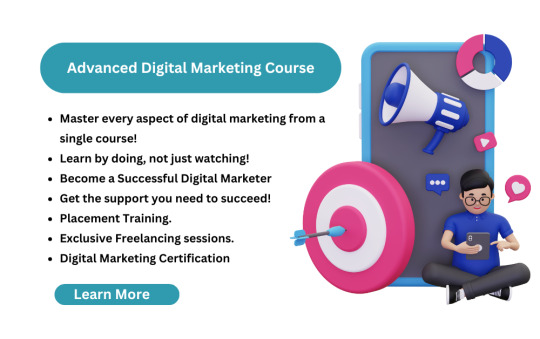
From small home businesses to global corporations, everyone needs a strong digital presence. This means jobs in areas like SEO, content marketing, and performance marketing are in high demand. Moreover, new technologies like artificial intelligence are opening up exciting new opportunities.
Digital Marketing is a dynamic field with endless growth potential.
Also Read: 7 Ultimate Tips to Earn Money from Digital Marketing
10 Work From Home Digital Marketing Jobs in 2024
1. SEO Specialist

Job Description:
Optimize website SILO structure and content to get visibility in search engine.
Conduct keyword research and implement On Page, Off Page and Technical SEO.
Monitor and analyze metrics and performance using tools like Google Analytics and Google Search Console.
Stay updated with the latest SEO trends and Core Google algorithms.
Required Skills:
Keyword Research: Ability to identify relevant keywords using several tools like keyword planner, SEMRUSH, Ahrefs for content optimization.
On-Page SEO: Knowledge of optimizing website and blog content with meta tags and description.
Off-Page SEO: Understanding of link-building strategies with higher authority websites and external SEO techniques.
Analytical Skills: Good Knowledge in using analytics tools to measure SEO performance.
Technical SEO: Familiarity with site structure, XML sitemaps, and mobile optimization.
2. Content Marketer

Job Description:
Plan, Develop and Execute content strategies to attract the target audiences.
Create high-quality different forms of content like blog posts, social media posts, reels etc.
Team up with Graphic Designers, copy writers, and SEO Analysts to produce compelling content.
Track and measure the performance of content published.
Required Skills:
Copywriting: Strong writing skills with an ability to create engaging, helpful and informative content.
SEO Knowledge: Understanding of how to optimize the social media content for user queries and search intent.
Content Strategy: Ability to plan and execute a 30-days content calendar with a mix of value and entertainment.
Creative Thinking: Ability to generate unique content ideas and formats.
Analytics: Use of tools to measure content performance and adjust the upcoming strategies accordingly.
3. Social Media Manager

Job Description:
Manage and boost the brand's social media presence across several digital platforms.
Develop social media strategies to improve the engagement and followers and be updated with latest trends.
Create and schedule posts, stories, and campaigns using content scheduling platforms and do re-purpose content if necessary.
Monitor competitor activities using tools.
Required Skills:
Platform Proficiency: Deep understanding of major social media platforms (Facebook, Instagram, Twitter, LinkedIn) and suggest growth in respective platforms.
Content Creation: Ability to create engaging multimedia content with engagement.
Analytics: Proficiency in social media analytics tools to track performance.
Community Management: Engage with followers through DMs and comments.
Trends Awareness: Staying updated with the latest social media trends and best practices.
4. Email Marketing Specialist
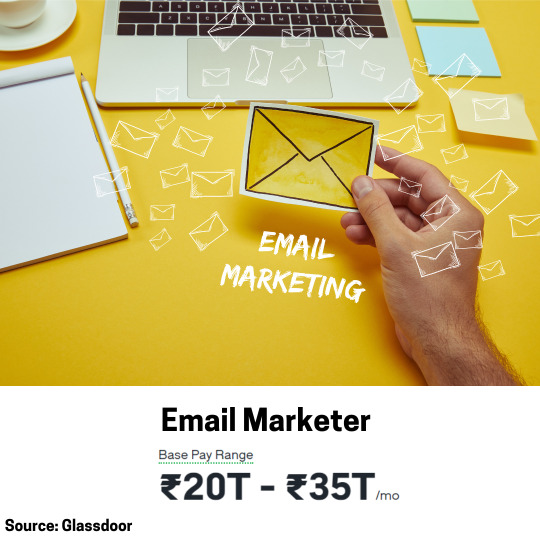
Job Description:
Design and implement email marketing campaigns.
Segment email lists and personalize email content.
Analyze how the campaigns are performing. Optimize for even better results.
Make sure everything follows email marketing rules.
Required Skills:
Email Platforms: Know tools like Mailchimp, Constant Contact, or similar ones.
Copywriting: You got to write catchy emails that grab attention.
Segmentation: Be skilled at targeting specific audience groups.
Analytics: Use data to figure out how emails are doing & what to improve.
Regulation Knowledge: Understand rules like the CAN-SPAM Act & GDPR compliance.
5. Digital Marketing Analyst

Job Description:
Look at data from different digital marketing channels. Measure how well campaigns work.
Create reports and share insights to boost marketing strategies.
Use analytics tools to keep an eye on website traffic, conversions, and how users behave.
Team up with marketing groups to fine-tune campaigns based on what the data says.
Required Skills:
Data Analysis: Strong analytical skills needed, plus familiarity with data analysis tools.
Google Analytics: Be good at using Google Analytics and similar tools.
Reporting: Know how to make detailed and insightful reports.
Critical Thinking: You should be able to make smart decisions from interpreting data.
Technical Skills: A basic grasp of HTML and web technologies is helpful.
6. Digital Marketing Trainer
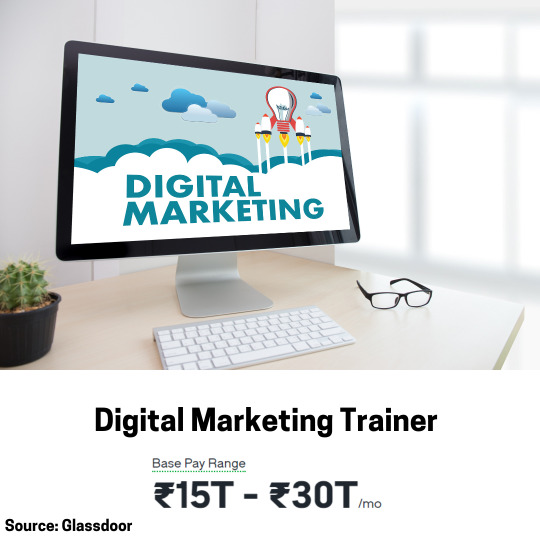
Job Description:
Develop & deliver training programs on various digital marketing topics.
Create educational content like presentations, guides, and e-learning modules.
Assess trainees' progress and give feedback.
Stay up-to-date with the latest digital marketing trends and tools to weave into training.
Required Skills:
Teaching Skills: Can explain complex stuff in a way that's easy to understand to students.
Digital Marketing Expertise: Deep knowledge of different digital marketing channels & strategies.
Content Creation: Skilled at making training materials that are fun & informative.
Communication: Strong verbal and written skills that get the message across clearly.
Adaptability: Can customize training for all kinds of skill levels and learning styles.
7. E-commerce Specialist
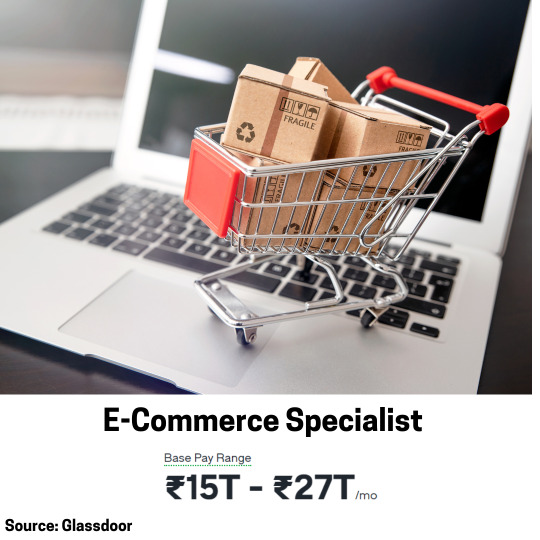
Job Description:
Manage & optimize online stores to boost sales.
Handle product listings, descriptions, and pricing details.
Implement digital marketing strategies that drive traffic & conversions.
Analyze e-commerce performance and spot areas needing improvement.
Required Skills:
E-commerce Platforms: Knows platforms like Shopify, WooCommerce, and Magento well.
Digital Advertising: Has experience with advertising techniques tailored for e-commerce.
SEO Knowledge: Can optimize product listings so they're easy to find on search engines.
User Experience (UX): Understands how to improve the online shopping journey for customers.
Analytics: Can analyze sales data & make smart decisions based on it.
8. Influencer Marketer

Job Description:
Find & work with influencers to promote products or services.
Create strategies & campaigns for influencer marketing.
Negotiate terms & keep good relationships with influencers.
Watch & analyze how well the influencer campaigns perform.
Required Skills:
Social Media Savvy: Really understanding social media platforms and the world of influencers.
Relationship Building: Skills to make strong connections with influencers.
Negotiation: Able to strike deals and manage contracts with influencers.
Creative Strategy: Coming up with cool and effective influencer campaigns.
Analytics: Using tools to see how campaigns are doing and measuring ROI.
9. Website Manager
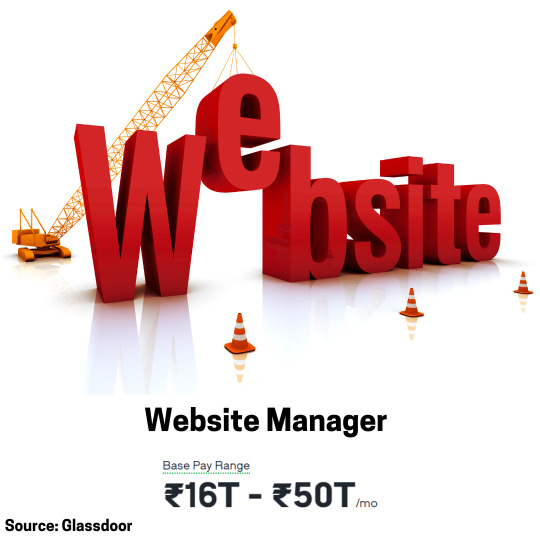
Job Description:
Run the daily operations of the company's website(s).
Make sure the website works well, is up, and runs smoothly.
Keep website content fresh! Update text, images, & multimedia regularly.
Look at site analytics and work for better user experience & SEO.
Work together with developers, designers, & marketing teams to make website updates and improvements happen.
Required Skills:
Technical Proficiency: Know-how about web technologies, HTML, CSS, plus CMS platforms like WordPress.
SEO Knowledge: Understand on-page SEO tricks & how to optimize websites effectively.
Content Management: Handling and updating the website content easily.
Analytical Skills: Good at using web analytics tools like Google Analytics.
Problem-Solving: Quick to troubleshoot & fix website issues as they occur.
Project Management: Good at coordinating website projects and updates with different teams.
10. Performance Marketer

Job Description:
You'll develop & manage performance marketing campaigns across a bunch of digital channels.
It's important to optimize campaigns so you hit your KPIs—like conversions, clicks, & ROI.
Analyzing data is key, plus you'll need to create reports on how well the campaigns are doing.
Implement A/B testing to improve campaign effectiveness.
Working with other marketing teams will help align all those performance strategies.
Required Skills:
Analytical Skills: Strong ability to analyze data and draw actionable insights.
Performance Tools: Being good with performance marketing tools—think Google Ads, Facebook Ads, & other PPC.
A/B Testing: You should know how to set up A/B tests and check how they're working to make campaigns work better.
Campaign Management: Experience managing big digital marketing campaigns will be taken into account.
ROI Optimization: It's crucial to understand how to tweak campaigns for the best return on investment possible.
Communication: Ability to clearly communicate performance results and strategy recommendations.
#work from home#digital marketing#content marketing strategy#work from anywhere#work from your phone
0 notes
Text
Unlock Growth with Expert SEO in Salt Lake City by Sites by Sara
In today's competitive digital landscape, having a stellar online presence isn't just an option—it's a necessity. If you're a marketing manager, business owner, or service-based provider in Salt Lake City, you know that SEO is more than just a buzzword. It's the key to unlocking substantial growth and driving meaningful traffic to your website. That’s where Sites by Sara comes into play. With our years of experience and a proven track record, we can elevate your business to new heights through expert SEO strategies tailored specifically for Salt Lake City businesses.
Why Choose Expert SEO in Salt Lake City?
Local Expertise Makes All the Difference
When it comes to SEO, one size does not fit all. Local SEO is a specialized field that requires an in-depth understanding of the local market, including search behaviors, local competitors, and regional trends. At Sites by Sara, we bring our local expertise to the table, making us the go-to experts for SEO in Salt Lake City.
Tailored Strategies for Comprehensive Growth
We don’t believe in cookie-cutter solutions. Every business is unique, and so are its SEO needs. Our team at Sites by Sara crafts personalized SEO strategies designed to meet the specific requirements of your business. From keyword research and on-page optimization to content creation and link building, we cover all aspects to ensure holistic growth.
Our SEO Services
Keyword Research and Optimization
Finding the right keywords is crucial for any successful SEO campaign. We identify high-impact keywords relevant to your industry and integrate them seamlessly into your content. Whether it's "Expert SEO Salt Lake City" or "SEO growth strategies Salt Lake City", we ensure your business ranks for terms that matter.
Content Creation and Optimization
Great content is the backbone of any successful SEO strategy. Our team of talented copywriters creates engaging, informative, and SEO-optimized content that resonates with your target audience. From blog posts to landing pages, we ensure that your content not only attracts but also converts.
On-Page SEO
On-page SEO refers to the optimization of individual web pages to rank higher and earn more relevant traffic. This includes optimizing meta tags, headers, URLs, and internal links. At Sites by Sara, we meticulously optimize every element to ensure that your pages are search engine-friendly.
Link Building
A robust link-building strategy is essential for improving your site’s authority. We employ ethical and effective link-building techniques to acquire high-quality backlinks from reputable sites. This not only boosts your search engine rankings but also drives more organic traffic to your site.
Technical SEO
Technical SEO involves optimizing the backend of your site to improve its overall performance and user experience. We conduct thorough audits to identify and rectify any technical issues that might be hindering your SEO efforts. From improving site speed to ensuring mobile-friendliness, we've got you covered.
Local SEO
For businesses targeting a local audience, local SEO is indispensable. We optimize your Google My Business profile, ensure consistent NAP (Name, Address, Phone number) information across all directories, and employ geo-targeted keywords to make sure you show up in local searches.
The Benefits of Choosing Sites by Sara
Proven Track Record
At Sites by Sara, we pride ourselves on delivering results. Our clients have seen substantial improvements in their search engine rankings, website traffic, and conversion rates. Don’t just take our word for it—check out our case studies and client testimonials to see the transformation for yourself.
Comprehensive Reporting
Transparency is key to a successful SEO campaign. We provide detailed reports that give you insights into how your SEO efforts are performing. From keyword rankings to traffic statistics, our reports help you track progress and make informed decisions.
Dedicated Support
We believe in building lasting relationships with our clients. That’s why we offer ongoing support to ensure your SEO strategy continues to deliver results. Whether you have questions or need adjustments, our team is always here to help.
How to Get Started
Schedule a Free Discovery Session
Ready to unlock the growth potential of your business? Contact Sites by Sara today to schedule a free discovery session. We’ll discuss your business goals, current challenges, and how our SEO experts can help you achieve success.
Customized SEO Plan
Based on our initial discussion, we’ll create a customized SEO plan tailored to your specific needs. This plan will outline the strategies we’ll employ to improve your search engine rankings and drive more traffic to your website.
Ongoing Optimization and Support
SEO is not a one-time effort; it requires ongoing optimization and support. We’ll continuously monitor your website’s performance, make necessary adjustments, and keep you informed every step of the way.
Contact Us Today
Don’t miss out on the opportunity to grow your business with expert SEO in Salt Lake City. Contact Sites by Sara at 385-355-5351 or visit our website to learn more about our services. Together, we can achieve remarkable results and take your business to the next level.
Conclusion
Unlocking growth with expert SEO in Salt Lake City is within your reach. With Sites by Sara, you get a dedicated team of professionals committed to helping you achieve your business goals. Our comprehensive SEO services, local expertise, and commitment to client satisfaction set us apart from the competition. Take the first step towards a more prosperous future—call us at 385-355-5351 to get started today.
0 notes